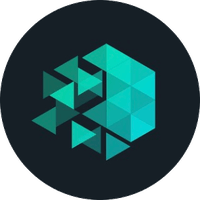2018 started with strong ICOs and several milestone platform releases, including the launch of Oyster, Tron, and EOS mainnets. The cryptocurrency market may be bearish, but the blockchain platforms they’re built upon continue to surge ahead.
Will these mainnet launches push their associated tokens out of the cryptocurrency slump? It’s impossible to tell. But when a team brings its project to a viable mainnet stage, it’s a good sign the platform will stick around long-term. This is when patient investors really start paying attention.
Below we take a look at the 6 most promising mainnet launches scheduled for the second half of 2018.
Enigma (Q3 2018)
 Enigma isn’t a cryptocurrency project or a smart contracts platform. Instead, it’s a privacy protocol that can be used with other blockchains, a so-called “missing piece” to a secure decentralized future.
Enigma isn’t a cryptocurrency project or a smart contracts platform. Instead, it’s a privacy protocol that can be used with other blockchains, a so-called “missing piece” to a secure decentralized future.
The Enigma network acts as a masking mechanism to ensure nodes on the partner blockchain are unable to see the data they compute. Verifications proceed as normal while Enigma is in use, but the process adds a level of privacy not available on most dapp platforms. The team calls these encrypted smart contracts “secret contracts”.
The Enigma devs launched testnet 1.0 on June 30. The release allows developers to create, deploy, and verify secret contracts inside a trusted execution environment.
The mainnet launch is scheduled for Q3 and should be available by the end of September. This will allow secret contracts to be executed on the Ethereum mainnet, the project’s first step to platform-agnostic dapps privacy.
Enigma’s position as a protocol, not a cryptocurrency or platform, gives it the ability to operate with little direct competition. The community is growing slowly but surely, bolstered by the sudden Q2 testnet release. When the mainnet arrives in September, we could see another wave of interest surge forward.
Zilliqa (Q3 2018)
 Few modern blockchain projects have managed to avoid the growing pains associated with scalability. As they grow in popularity, their validation times go from seconds to minutes, and transaction fees increase as a result.
Few modern blockchain projects have managed to avoid the growing pains associated with scalability. As they grow in popularity, their validation times go from seconds to minutes, and transaction fees increase as a result.
Zilliqa planned for scalability from the start by utilizing a sharding model that could facilitate millions of transactions per second. The network simply increases the number of active nodes in proportion to the number of transactions, ensuring it can always meet transaction demands no matter how numerous they become.
Zilliqa also uses a new smart contract programming language known as Scilla, which the team claims is easier for developers to use and more secure than Ethereum’s Solidity.
The Zilliqa testnet launched its first version in early 2018, with v2.0 following only a few months later. Smart contracts alpha launched in mid-2018. The mainnet release and beta launch of smart contracts are both scheduled for Q3.
Zilliqa’s speed and readiness for growth make it a lucrative project worth keeping an eye on. Support for the platform swelled in the months following both testnet releases, a pattern that could repeat when the mainnet reaches maturity.
OriginTrail (Q3 2018)
 Supply chain management isn’t a sexy industry to focus on. But as the multitude of blockchain projects taking aim at this sector can attest, there’s room for innovation, and room for profit.
Supply chain management isn’t a sexy industry to focus on. But as the multitude of blockchain projects taking aim at this sector can attest, there’s room for innovation, and room for profit.
OriginTrail aims to provide a platform for businesses to process, store, and share data in a secure and transparent manner. The project originated as a system for tracking and selling perishable food products. As it matured, the team discovered its solutions could be used for a wider variety of logistics and e-commerce applications.
The OriginTrail Apollo testnet successfully launched on June 29. Use-case voting opened shortly after, allowing token holders to vote for projects to expand the ecosystem.
The full decentralized mainnet launch is scheduled for Q3 and should be live by September 30. This will include a second open call for use-case voting, along with IoT protocol updates and new office locations in the U.S.
OriginTrail is making a big push in the later half of 2018. The mainnet release itself should be enough to attract attention from clients and investors, but with initiatives to build partnerships across the Americas, the second half of 2018 could be a breakout time for OriginTrail.
Bee (Q3/Q4 2018)
 The travel industry is ripe for a revolution. One project looking to lead the way is the peer-to-peer home sharing platform Bee.
The travel industry is ripe for a revolution. One project looking to lead the way is the peer-to-peer home sharing platform Bee.
Bee Token uses blockchain technology to allow hosts and guests to carry out trustless rental transactions. Home owners can list their properties on Beenest where travelers can search, browse, and book using cryptocurrency payments. On the surface it works a lot like Airbnb or VRBO, but with blockchain technology under the hood, Bee provides an entirely different experience for travelers.
The Beenest platform launched select listings for San Francisco properties in the first half of 2018. It later expanded to include more locations in the California area. The platform is currently live but in a limited state.
Bee’s mainnet launch is scheduled for Q3 – Q4. This will also mark the release of Bee Protocols, bringing payment, arbitration, and reputation features to the platform. After the mainnet release, the Bee team plans expansion to at least 5 U.S. cities in 2019, with London, South Korea, and Singapore slated for 2020 and beyond.
Bee had a slow start, but the team is certain it can capitalize on a niche market in need of transformation. Current intermediaries such as Airbnb take high percentage fees and have the ability to alter or remove user reviews, two drawbacks Bee can eliminate through the power of decentralization.
IoTeX (Q4 2018)
 IoTeX is a blockchain infrastructure built for the Internet of Things (IoT). Its main goal is “connecting the physical world, block by block,” and it does this with a particularly strong focus on privacy.
IoTeX is a blockchain infrastructure built for the Internet of Things (IoT). Its main goal is “connecting the physical world, block by block,” and it does this with a particularly strong focus on privacy.
IoTeX leverages a unique blockchain-in-blockchain architecture that pulls states off the root chain to boost privacy, scalability, and interoperability. It also deploys a fast consensus mechanism known as randomized delegated proof-of-stake, or Roll-DPoS, that can support millions of nodes with a more decentralized approach than traditional DPoS.
IoTeX launched the alpha version of its testnet in June, with the beta release scheduled for August. The mainnet will roll out in incremental versions starting with a preview build in October.
Once it’s feature-complete and out of beta, IoTeX aims to be the “spinal cord in the IoT nervous system.” The network aims to handle everything from self-driving taxi payments to identity management, smart home automation, and more, making it a powerful technology for the future.
Theta (Q4 2018)
 Theta is poised to disrupt the user-created video industry dominated by YouTube, Vimeo, and related competitors. The network will provide a complete infrastructure for on-demand and live streaming content while reducing costs, and decentralizing and democratizing the online video ecosystem.
Theta is poised to disrupt the user-created video industry dominated by YouTube, Vimeo, and related competitors. The network will provide a complete infrastructure for on-demand and live streaming content while reducing costs, and decentralizing and democratizing the online video ecosystem.
Theta hopes to address the problems of low quality video streams and the high cost of serving content that are currently holding back the industry. Its decentralized solution can also eliminate gatekeepers that routinely take large cuts of creator’s profits and demonetize videos without any warning.
Theta launched its testnet in late June, with an integration with the Sliver.tv streaming service for trial purposes. The public mainnet is scheduled to release late Q4 2018. The project is also backed and advised by YouTube co-founder Steve Chen and Twitch founder Justin Kan, adding an impressive amount of experience to the team.
Final Thoughts
Taking a blockchain project from concept to minimal viable product is no small feat. Reaching public mainnet is an even bigger challenge.
When a milestone this impressive is met, both investors and potential clients are bound to take notice. It may not be a call to drop everything and buy hundreds of tokens, but it’s certainly a good time to put a project on your watchlist and start tracking it for long-term potential.

